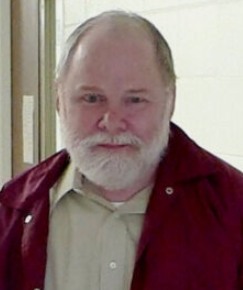| NTP Timelord Dies |
| Written by Harry Fairhead |
| Friday, 26 January 2024 |
|
David Mills, the inventor, in 1985, of Network Time Protocol (NTP) which synchronizes computer clocks across different computer systems and networks, passed away on January 17, 2024, at the age of 85. New of his death was shared with the Internet Society by Vint Cerf who wrote: He was such an iconic element of the early Internet. Network Time Protocol, the Fuzzball routers of the Internet users today still have reason to be grateful. Mills single-handedly created and maintained a solution that solves a crucial challenge in the online world: the synchronization of time across different computer systems and networks. In a digital environment where computers and servers are located all over the world, each with its own internal clock, there's a significant need for a standardized and accurate timekeeping system. NTP provides the solution by allowing clocks of computers over a network to synchronize to a common time source. This synchronization is vital for everything from data integrity to network security. For example, NTP keeps network financial transaction timestamps accurate, and it ensures accurate and synchronized timestamps for logging and monitoring network activities. NTP now operates on billions of devices worldwide, coordinating time across every continent to within tens of millioseconds and has become a cornerstone of modern digital infrastructure.
Born in Oakland Californina in 1938 and visually impaired from birth, David Lennox Mills earned his PhD in Computer and Communication Sciences from the University of Michigan in 1971. While at Michigan, he worked on the ARPA-sponsored Conversational Use of Computers (CONCOMP) project and developed DEC PDP-8-based hardware and software to allow terminals to be connected over phone lines to an IBM 360 mainframe. In 1977 he began working at COMSAT (Communications Satellite Corporation) where he was given an openended brief to use funding from the Department of Defense earmarked for the arpanet to do things like develop electronic mail, and protocols. His decided to tackle the time-synchronization problem, telling Nate Hopper who interviewed him for the New Yorker in 2022 that part of the allure was that he was just about the only one doing it and that he had his own “little fief.” Although Mills faced significant challenges in maintaining and evolving the protocol, especially as the Internet grew in scale and complexity, he continued to keep the project to himself but eventually turned over control of the protocol to Harlan Stenn due to loss of his sight. Mills was widely recognized for his work, becoming a Fellow of the Association for Computing Machinery in 1999 and the Institute of Electrical and Electronics Engineers in 2002, as well as receiving the IEEE Internet Award in 2013 for contributions to network protocols and timekeeping in the development of the Internet. At the time of his death, Mills was an emeritus professor at the University of Delaware, having retired in 2008 after teaching there for 22 years. More InformationRelated ArticlesTo be informed about new articles on I Programmer, sign up for our weekly newsletter, subscribe to the RSS feed and follow us on Twitter, Facebook or Linkedin.
Comments
or email your comment to: comments@i-programmer.info |
| Last Updated ( Friday, 26 January 2024 ) |



